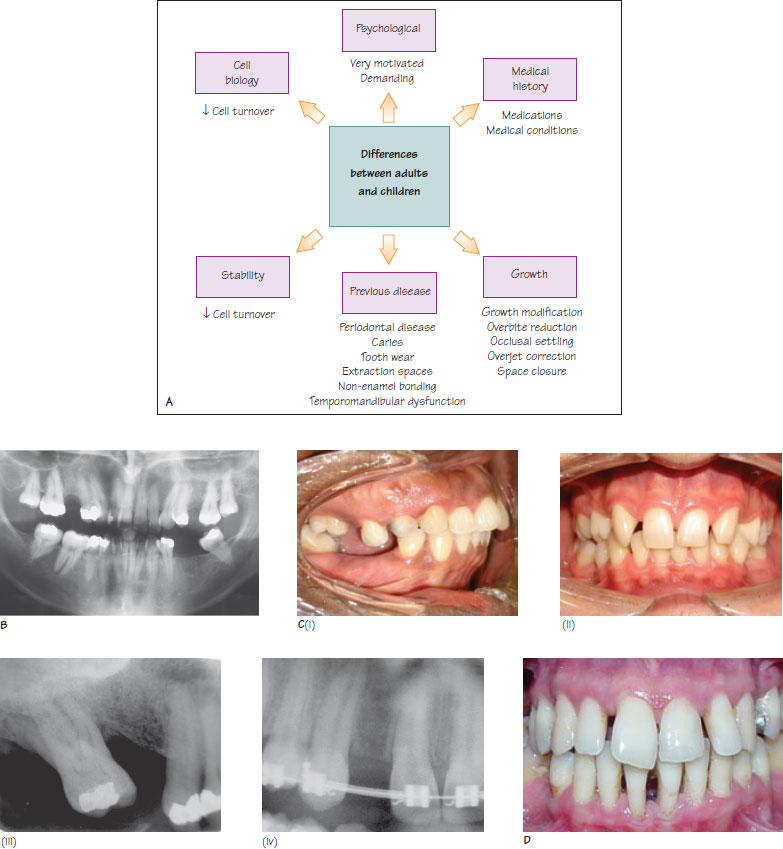42
Adult orthodontics
Figure 42.1 (A) The differences between treating adults and children. (B) Previous dental disease can complicate orthodontic management as in this patient who has a heavily restored dentition, periodontal disease and previous tooth loss. (C) Orthodontics can be used to facilitate restorative treatment: (i) Intrusion of over-erupted upper right first premolar, (ii) re-creation of space for missing lateral incisors, (iii) uprighting of potential bridge abutments and (iv) root paralleling and separation for the placement of implants. (D) Periodontal destruction predisposes to pathological tooth migration such as spacing, extrusion and rotation of affected teeth.

The demand for adult orthodontics has increased dramatically over the past two decades. This is due to a number of factors including a greater awareness of the importance of an aesthetic smile, an appreciation of how orthodontics can facilitate restorative dentistry and the introduction of more aesthetically pleasing and socially acceptable appliances. Orthodontic treatment in adults may be provided to improve aesthetics, function and/or facilitate restorative treatment.
Differences between treating adults and children
The differences between treating adults and children are summarised in Figure 42.1A.
Psychologically, adults have often made a conscious effort to seek orthodontic care and are often more clear about what they would like to achieve. They may be keen to have aesthetically appearing appliances for social or professional reasons. A major benefit of treating adults is that they can be extremely motivated and compliant with instructions (e.g. oral hygiene, elastic wear).
Unlike the majority of children, adult patients may have a complicated medical history. The actual condition, or the medications that are used for its treatment, can alter the way in which care is delivered.
A major difference between treating adults and children is the lack of facial growth in older patients. Favourable facial growth in children can facilitate space closure, overjet (e.g. functional appliances) and overbite (e.g. bitepl/>
Stay updated, free dental videos. Join our Telegram channel

VIDEdental - Online dental courses


